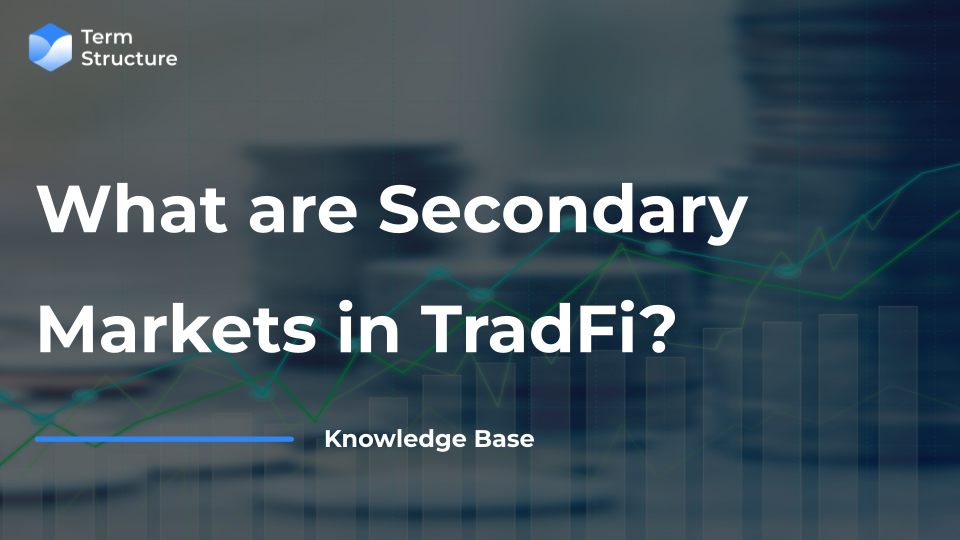What are Secondary Markets in TradFi?

Secondary markets for bonds refer to the financial markets where previously issued bonds are bought and sold among investors. Unlike the primary market, where new bonds are issued for the first time, the secondary market allows buyers and sellers to trade existing bonds. The secondary market provides liquidity and allows investors to buy or sell bonds after the initial issuance.
Key features and characteristics of secondary markets for bonds include:
- Trading Among Investors: In the secondary market, investors trade bonds with each other. The original issuer of the bond does not receive proceeds from these transactions, as the bonds are being bought and sold among investors.
- Liquidity: The secondary market enhances liquidity by providing a platform for investors to enter or exit their positions in bonds. Investors can sell bonds they currently own or purchase additional bonds from other market participants.
- Price Discovery: Prices of bonds in the secondary market are determined by supply and demand dynamics. Bond prices fluctuate based on changes in interest rates, creditworthiness of the issuer, economic conditions, and other factors. The secondary market plays a crucial role in price discovery.
- Investment Banks, Brokers & Dealers: Investment banks, brokers, and dealers act as intermediaries in the secondary market to facilitate the buying and selling of bonds. They may operate on exchanges or over-the-counter (OTC) markets. OTC markets involve direct transactions between buyers and sellers, while exchanges provide a centralized marketplace.
- Bid and Ask Prices: Bonds are quoted with bid and ask prices in the secondary market. The bid price represents the maximum price a buyer is willing to pay, while the ask price is the minimum price a seller is willing to accept. The difference between the bid and ask prices is known as the spread.
- Price Transparency: Secondary markets contribute to price transparency because bond prices and trading volumes are often reported and disseminated to the public. Investors can access information on recent trades and market conditions.
- Market Participants: Various types of investors participate in the secondary market, including institutional investors (asset managers, pension funds, insurance funds, endowments, etc.), retail investors, hedge funds, and other financial institutions. Market participants may buy bonds for investment purposes, speculation, or risk management.
- Risk Management: The secondary market enables investors to adjust their bond portfolios based on changing market conditions. Investors can sell bonds to manage risk, adjust asset allocations, or take advantage of investment opportunities.
To conclude, the secondary market is crucial for the overall functioning of the bond market, providing investors with the flexibility to trade bonds and manage their investment portfolios efficiently.
